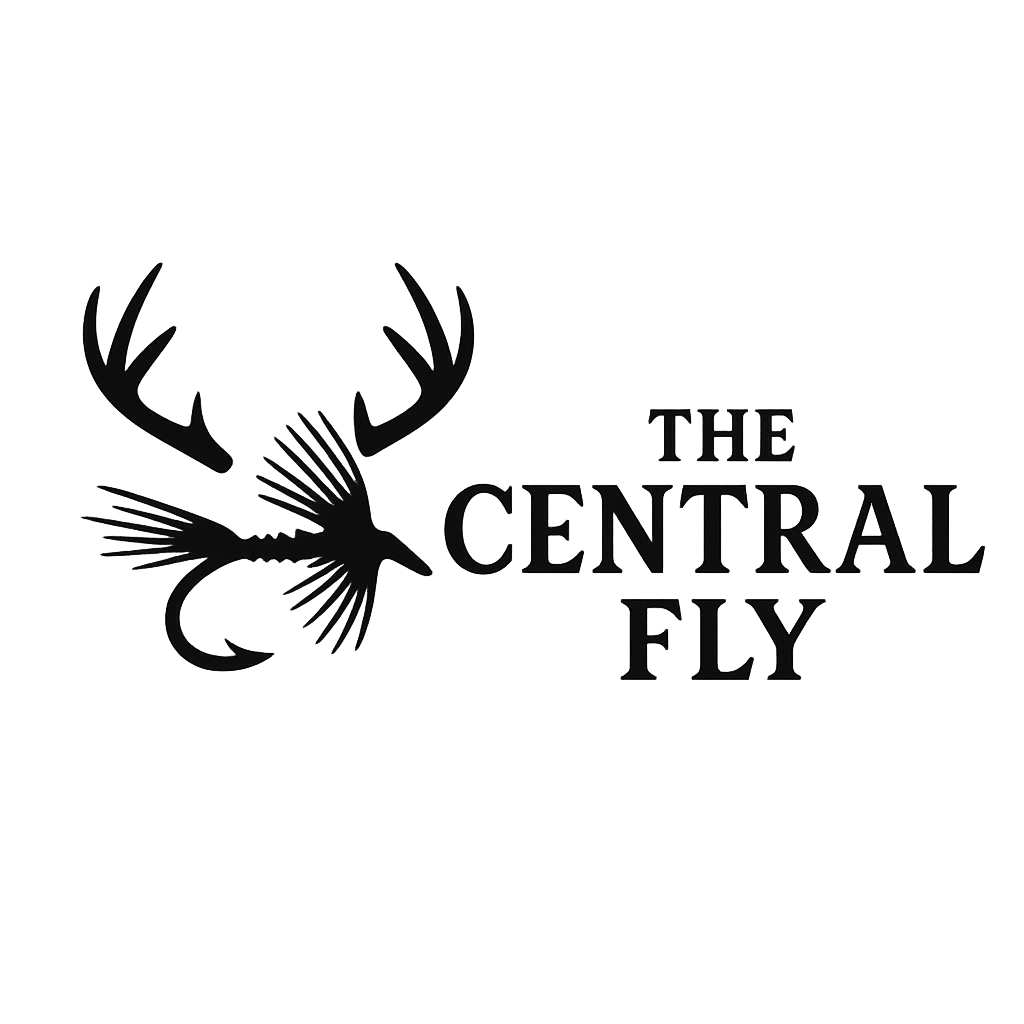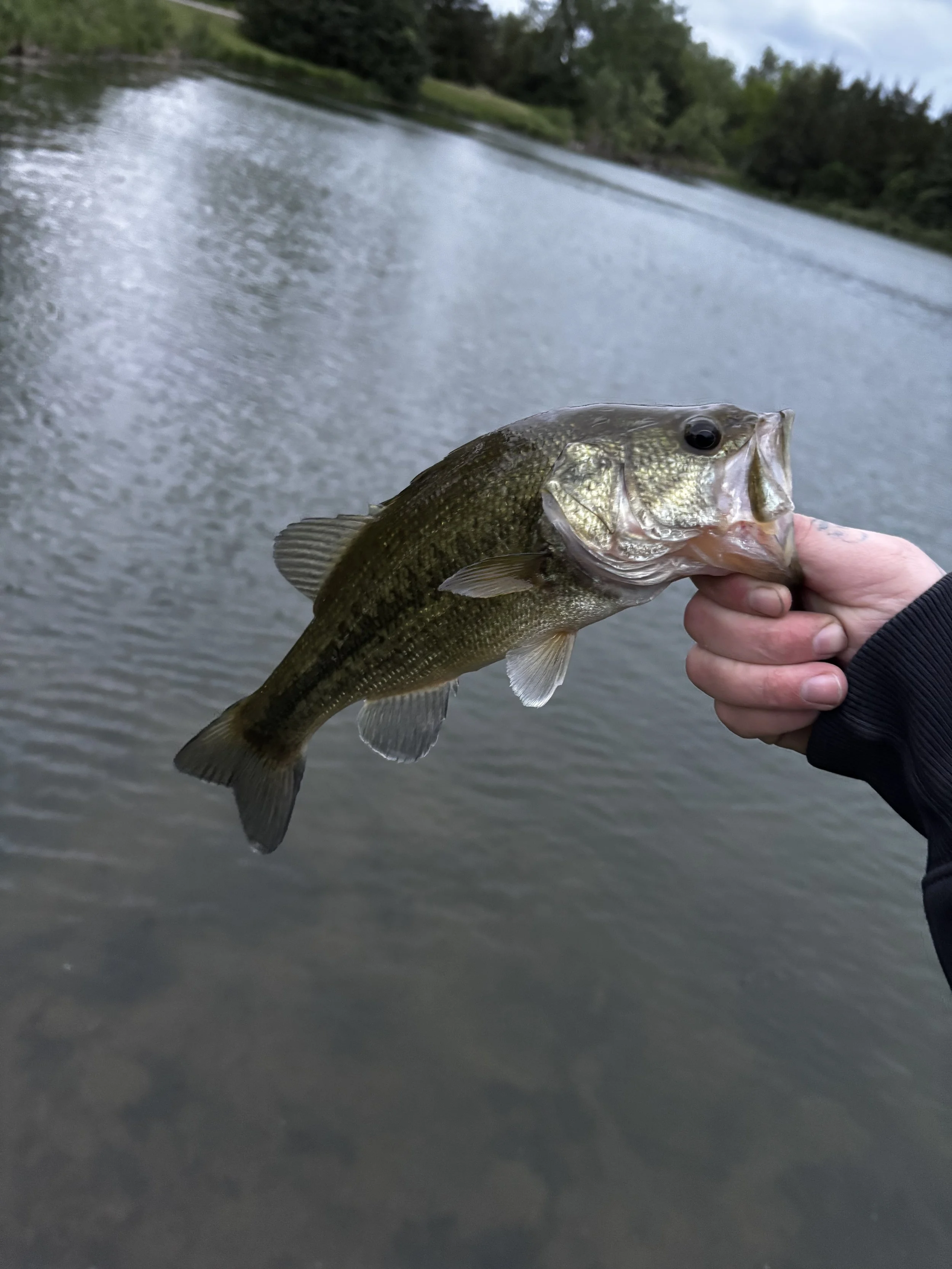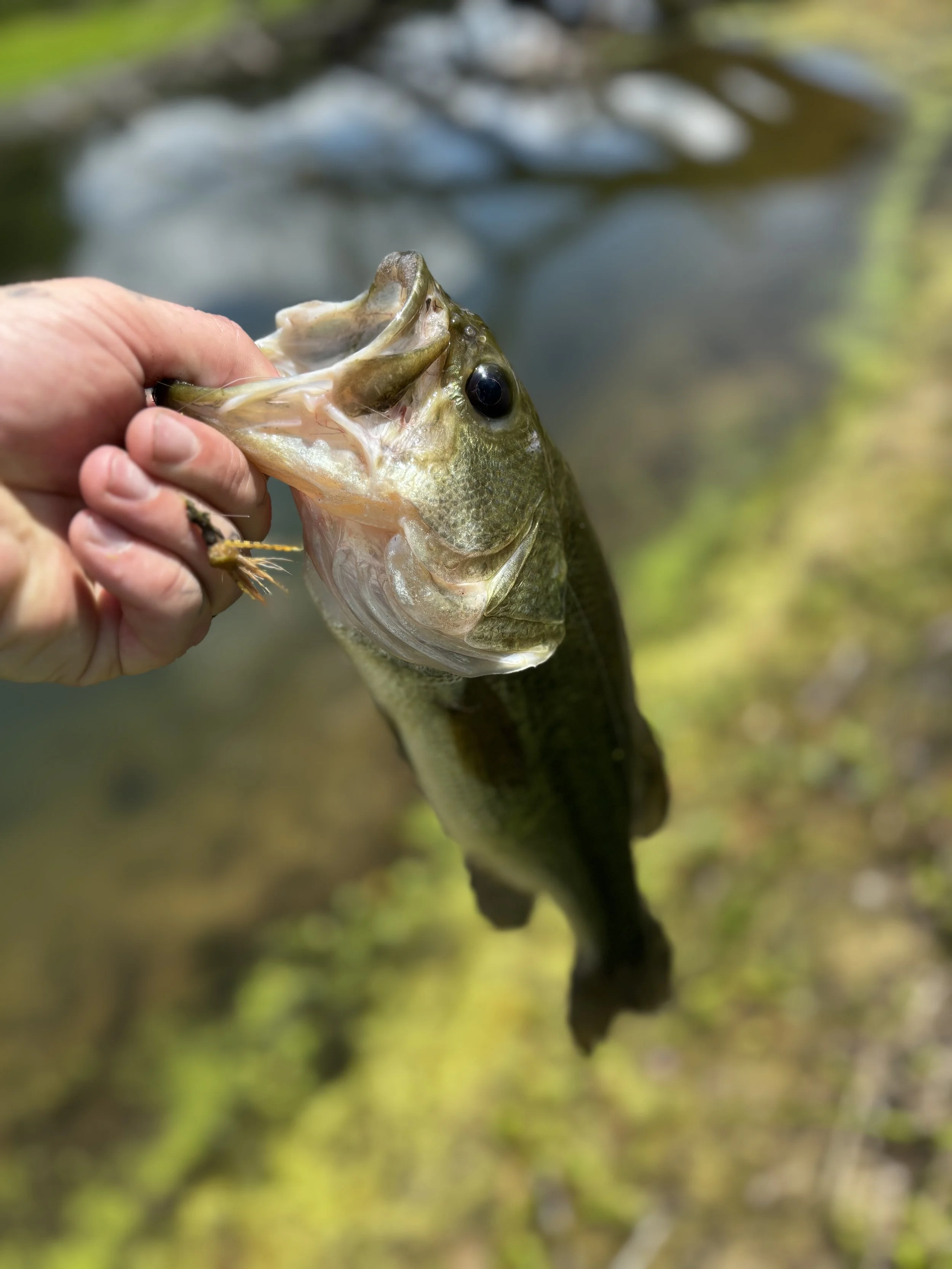Largemouth bass
During the summer months, bass in a lake are typically found near deeper, cooler water—especially during the heat of the day. Look for them around underwater structures like drop-offs, submerged logs, rock piles, and ledges. In the early morning or late evening, they often move into shallower areas like weed edges, coves, and points to feed. Areas with shade from docks, overhanging trees, or lily pads can also hold bass throughout the day. Pay attention to baitfish activity and water temperature changes, as bass will often follow the food into more oxygen-rich or cooler zones.
-
Fish – Bluegill, shad, minnows, perch, and smaller bass
Amphibians – Frogs and tadpoles
Insects – Dragonflies, beetles, crickets, and aquatic insects
Crustaceans – Crawfish (a favorite food in many lakes and rivers)
Small mammals and birds – Occasionally, they’ll eat mice, baby ducks, or other small animals near the water
-
Largemouth bass typically spawn in the spring, when water temperatures reach 60–75°F (15.5–24°C). In most parts of the U.S., this happens between March and June, depending on the local climate.
-
Largemouth bass are found throughout the United States and in many other parts of the world due to widespread stocking. Here’s a breakdown of where you can find them
I personally spend a lot of time at Two Rivers State Recreation Area and have had significant luck chasing largemouth bass. Some things I have noticed is that they love a classic wacky rig. I would recommended using an olive green worm with a size 2 ewg hook. You don’t need to cast far to catch a big one, most of my bass this year have been in 3 to 5 feet of water right outside of cover. You can trust that a wacky rig, or rig of the same variation, will draw them out of cover. This has worked for me at lakes like Flanagan, Standing Bear, Two Rivers SRA, and Fremont lake system without fail.
Regarding bass on the fly, any earth tone fly like a wooly bugger or carp flies are working well for small to medium size bass. In this photo, you can see I used a carp fly that I tied featuring tan and dark brown to mimic larger insects in the lake bed.


